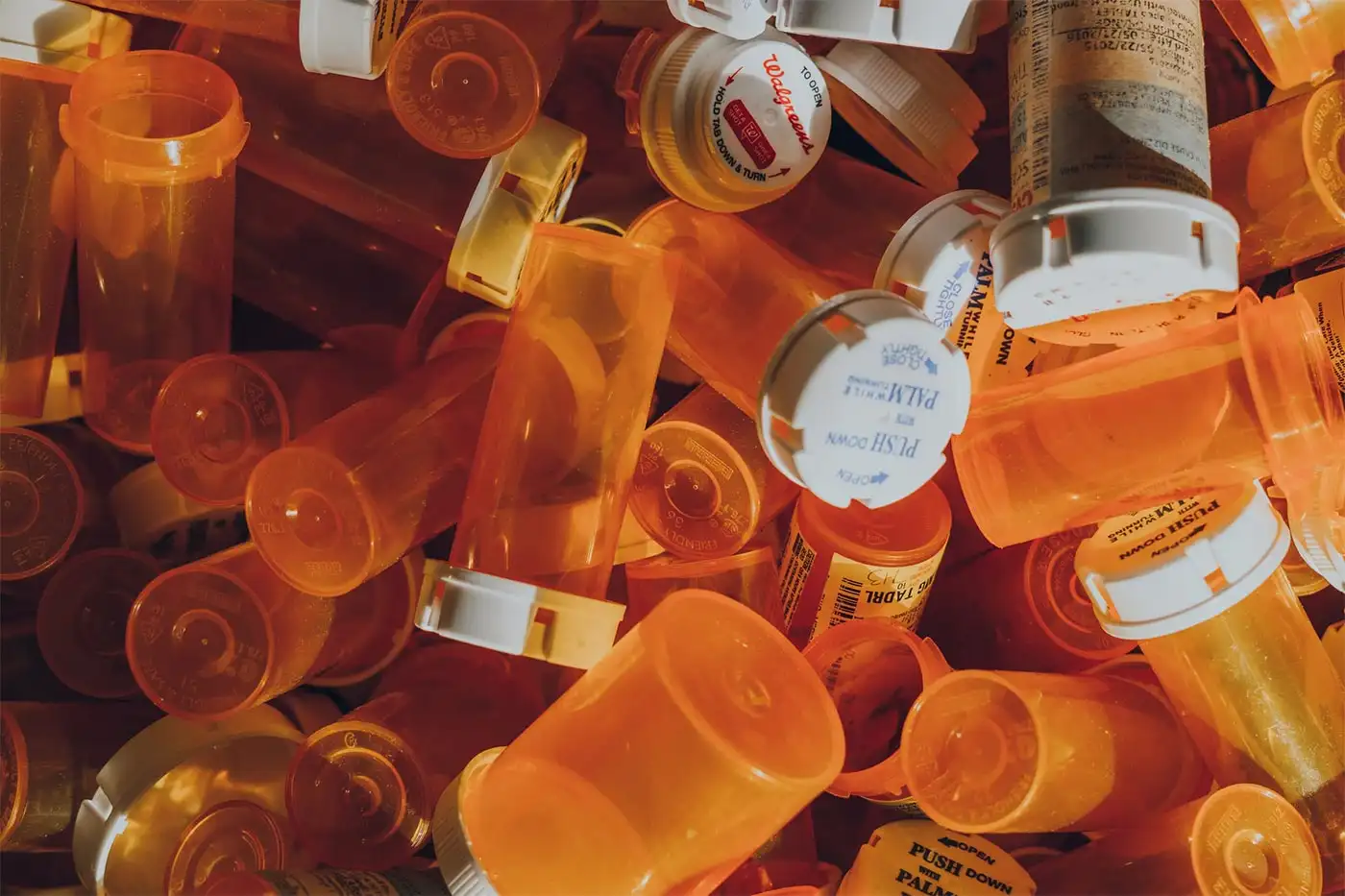Adderall Addiction Treatment

What is Adderall?
Adderall® is the brand name of a drug designed to combat Attention Deficit Hyper Activity Disorder (ADHD) and Narcolepsy. ADHD is a chronic disorder, most often diagnosed in school age children, which presents itself as a variety of symptoms, specifically inattention, hyperactivity, and impulsiveness. Recently however, there has been a recent rise in adult diagnosis of ADHD and subsequently a rise in Adderall addiction. Boys are four times more likely to be diagnosed with ADHD than girls.
Narcolepsy is defined as chronic daytime sleepiness and extreme fatigue. Narcoleptics experience periods of extreme sleepiness for 3-4 hours during the day, followed by a short, unplanned, nap, or sleep attack, which leaves the person feeling refreshed and alert.
How Does Adderall Work?
The combination of stimulants in Adderall (amphetamines and dextroamphetamine) work together to restore the balance of natural neurotransmitters in the brain. It increases the levels and the amounts of dopamine and norepinephrine in the brain, which create temporary improvements in mental or physical functions. Adderall is available as an instant release (IR) tablet or Extended Release (ER) caplet.
Side effects of Adderall Addiction
Since it is a stimulant, Adderall may lead to an increase in blood pressure. Increased blood pressure may increase a user’s risk of sudden death, heart attack, or stroke. The drug may temporarily decrease growth in children, although it appears normal growth resumes after drug therapy is stopped. It can also decrease appetite, which may lead to excessive or unwanted weight loss.

Adderall use during pregnancy should be closely monitored, as studies indicate some long-term neurological changes in the fetus. Some patients may experience extreme side effects but, they are not limited to:
- Paranoia
- Hallucinations
- Mania
Abuse: Adderall is one of the most prescribed drugs in the United States today. It is easily obtained without a prescription from friends and relatives, and it can often be ordered online without a prescription. There is no specific test for ADHD, so doctors use a level of “impairment” as the threshold for an ADHD diagnosis and subsequent prescription. Patients wishing to receive an Adderall prescription can easily manipulate the system to get the drug.
A study conducted in a report dated October 2016 noted that several US College Students abuse Adderall range between 13 – 23%, approximating around 17% on average. Sometimes called the “study drug,” students take it to remain focused and achieve a higher level of extended concentration. Adderall is also used as a party drug because it contains dextroamphetamine, which may increase confidence, mood, and libido. For a faster high, illegally obtained Adderall is often snorted, smoked, or injected.
Take the First Step Towards Overcoming Adderall Addiction Today
If you or someone you know is struggling with Adderall addiction, help is available. Take the first step towards recovery today. Reach out to our compassionate team for a confidential consultation and personalized treatment plan. Don’t wait—your path to a healthier, drug-free life starts now. Contact us today!

History of Ritalin/Methylphenidate
Ritalin/Methylphenidate Addiction
In 1954, CIBA pharmaceutical company, or Novartis, patented Methylphenidate as the potential cure for Mohr’s disease. Starting in the 1960s, doctors found it effective in treating ADHD, which was called hyperactivity or minimal brain dysfunction, or MBD. Today, it is the most widely prescribed treatment for ADHD around the globe. In the 1990s, the production of the medication increased significantly in the United States are more children were helped through the prescription and administration of the drug.
Ritalin is the brand name under which Methylphenidate is produced in the U.S., Mexico, Pakistan, Argentina, and European countries. In the European Union, it is used much less frequently.
In 2000, an extended-release form was created, which is called Concerta®, was released. Research demonstrated that the long-acting versions were helpful for some patients since effects were sustained throughout more hours of the day.
In 2006, a transdermal patch form, called Daytrana®, was approved for the treatment of ADHD. The sustained presence of the drug allows the patient to focus on important tasks that require concentration.
Side effects of Ritalin Addiction
Common side effects of Ritalin are usually mild, and include but, not limited to:
- Wakefulness
- Loss of Appetite
- Nervousness
- Irritability
- Headaches
- Stomach Aches
- Dry Mouth
- Blurry Vision
- Nausea
- Tics
- Drowsiness
Less Common but more serious side effects include:
- Hypersensitivity
- Anorexia
- Heart Palpitations
- Blood Pressure and Pulse Changes
- Cardiac Irregularities
- Anemia
- Psychosis
Long-term Ritalin use has side effects similar to long-term cocaine usage.
Adderall Detox and Withdrawal
For people who have become dependent or addicted to Adderall, withdrawal symptoms which present themselves through detox are generally unpleasant, and some users may resort to resuming drug use to remedy the symptoms. As the body attempts to recover from the state of imbalance Adderall abuse may induce, the recovering drug user may experience:
- Weakness
- Chills
- Tremors
- Flu-like symptoms
- Irregular heartbeat
- Anxiety
- Panic Attacks
- Depression
- Seizures
- Insomnia
- Paranoia
- Excessive sweating
Depending on the individual and the extent to which he or she has developed Adderall dependency, withdrawal symptoms may last for as little as two or three days to as long as one or two months. Adderall users should consult a medical professional to discuss the potential of experiencing severe withdrawal symptoms when deciding to stop using the drug suddenly or “cold turkey.”
Detox
Adderall addiction can be treated in several different ways. Inpatient care, which requires the patient to live onsite at a treatment facility in the early stages of overcoming addiction, is generally a preferable option. Patients who undergo treatment at an inpatient facility are able to be monitored by staff around the clock, which is helpful when withdrawal symptoms occur.
Residing at the facility enables the patient to be removed from external factors that may have initially triggered drug use. Inpatient care also enables patients to be removed from the supply of drugs that may exist outside the facility. Overall, receiving inpatient treatment allows the patient to focus more on getting clean and overcoming the addiction as he or she is subjected to a controlled environment with the support of multiple staff members who are usually each trained to focus on treating different aspects of addiction.

Treatment
People who are unable to take time away from work or school may also choose outpatient treatment. When undergoing outpatient care, the patient remains in his or her home environment and commits to regularly attending appointments at a treatment facility and typically therapy sessions. The risks of outpatient treatment include continued exposure to external triggers and other factors that may encourage drug use, the potential of the patient readily obtaining drugs due to lack of supervision, and the necessity of traveling to a medical facility to seek medical attention in the event that severe withdrawal symptoms occur. Outpatient care requires a substantial amount of commitment and discipline as the patient is generally responsible for getting him or herself to all appointments.
One-on-one and group therapy sessions are typically included in Adderall addiction treatment plans, whether the patient chooses an inpatient program or outpatient care. Attending therapy sessions helps patients address the underlying issues that led to initial drug use as well as factors that contributed to the patient’s continued drug abuse. Counselors and therapists also help patients learn healthier, more effective ways of managing stressful situations in the interest of avoiding relapse and living a healthier lifestyle.
Cost is generally an important factor as patients consider enrolling in a treatment program. Although inpatient facilities may be more expensive, there are several means by which a patient may cover his or her drug treatment costs. Many facilities accept insurance plans, and some are even willing to arrange more flexible payment plans for their patients. There are also non-profit organizations, which offer assistance to people who are in need of drug rehabilitation, but are unable to afford the cost of attending a program.
